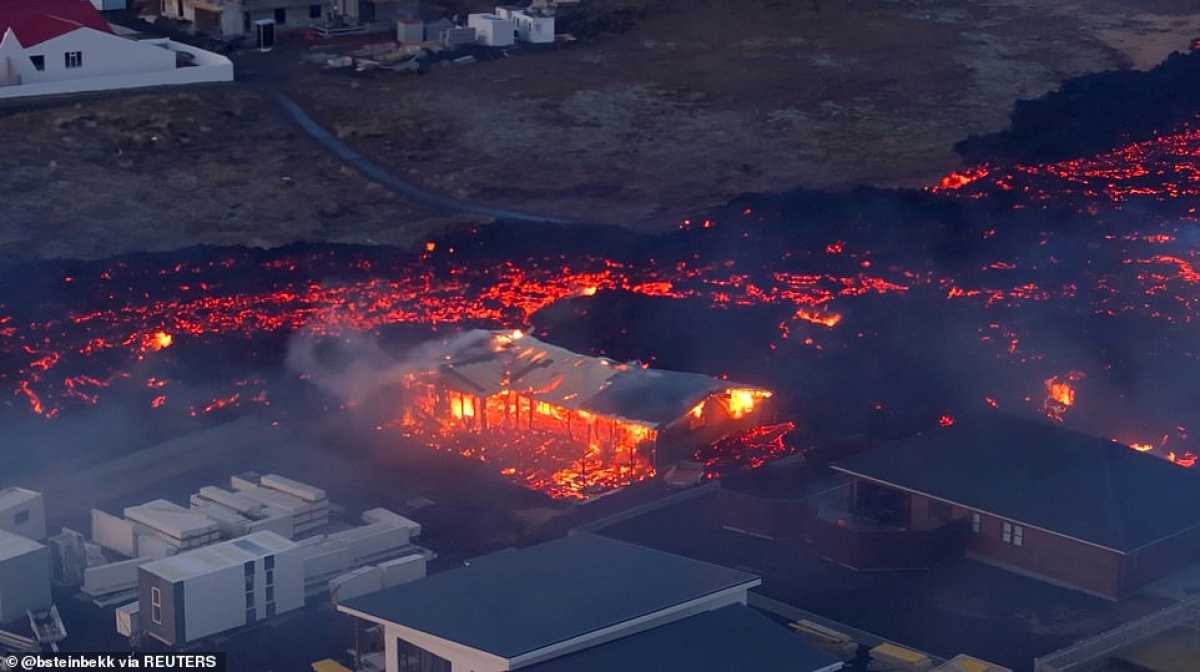News
Volcanic Eruption Engulfs Homes in Iceland’s Grindavik

In the wake of Sunday’s volcanic eruption in Grindavik, Iceland, a small coastal town, the aftermath has been described as a ‘black day’ for the Nordic island nation. Morgunbladid, a daily publication, emphasized the severity of the disaster by publishing an image of burning homes alongside the headline. At least 3,800 people were evacuated from the town following a series of earthquakes preceding the eruption.
Iceland’s President, Gudni Th. Johannesson, addressed the nation on Sunday evening, acknowledging the daunting period of upheaval that the country is facing. The eruption, which began before 8 a.m. local time, sent molten lava into Grindavik, setting several houses on fire. According to the Icelandic Meteorological Office, a 1,476 ft. crack emerged in the ground, which expanded to about 2,953 ft. by the evening. A second fissure, measuring approximately 328 ft., opened later in the day. Currently, the lava flow has decreased in intensity.
No casualties have been reported so far, but the displaced residents are awaiting long-term housing solutions from the government. Flights have been disrupted, except for Keflavik International Airport, while the popular tourist spot, Blue Lagoon spa, located near the volcano, remains closed. The eruption has already caused significant damage, including severing pipelines that supplied hot water to the town, rendering the homes uninhabitable in freezing temperatures.
This eruption marks Iceland’s fifth in the past three years and the second in Grindavik. The previous eruption on December 18 was accompanied by the projection of semi-molten rock from a 2.5-mile-long crack near the town. Residents were allowed to return home on December 22 when volcanic activity ceased. Emergency workers had started erecting defensive walls around the town, but they were not complete when the second eruption occurred. The walls have partially redirected the lava flow, although the new fissure managed to bypass the barriers, causing further devastation in the town.
Volcanologist Robin Andrews, commenting on the eruption, described the situation as a worst-case scenario. He highlighted the potential health risks, especially for individuals with respiratory problems. The impact of the volcanic activity has created an extremely perilous and deleterious situation, according to Andrews.












